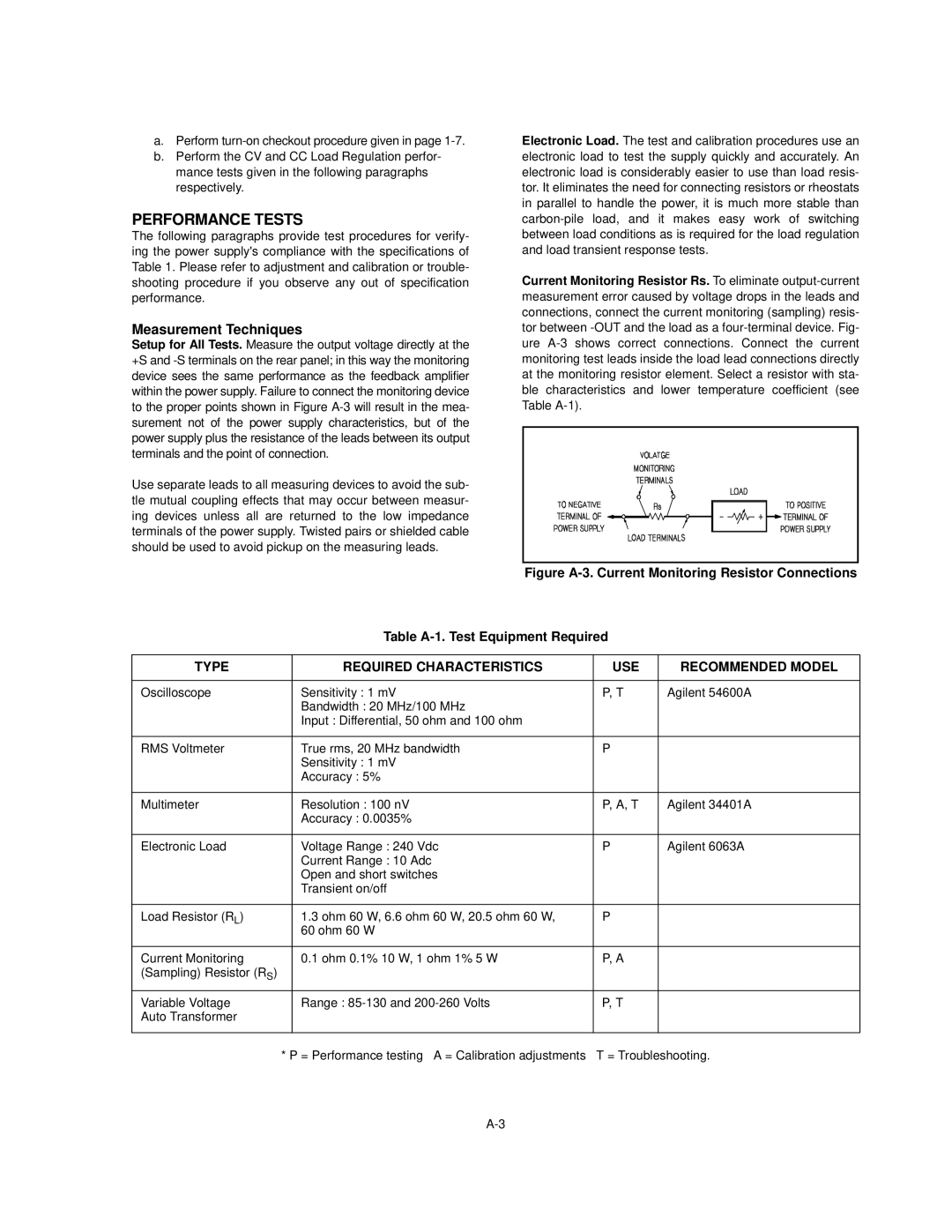
a.Perform
b.Perform the CV and CC Load Regulation perfor- mance tests given in the following paragraphs respectively.
PERFORMANCE TESTS
The following paragraphs provide test procedures for verify- ing the power supply's compliance with the specifications of Table 1. Please refer to adjustment and calibration or trouble- shooting procedure if you observe any out of specification performance.
Measurement Techniques
Setup for All Tests. Measure the output voltage directly at the +S and
Use separate leads to all measuring devices to avoid the sub- tle mutual coupling effects that may occur between measur- ing devices unless all are returned to the low impedance terminals of the power supply. Twisted pairs or shielded cable should be used to avoid pickup on the measuring leads.
Electronic Load. The test and calibration procedures use an electronic load to test the supply quickly and accurately. An electronic load is considerably easier to use than load resis- tor. It eliminates the need for connecting resistors or rheostats in parallel to handle the power, it is much more stable than
Current Monitoring Resistor Rs. To eliminate
Figure A-3. Current Monitoring Resistor Connections
Table A-1. Test Equipment Required
TYPE |
| REQUIRED CHARACTERISTICS | USE | RECOMMENDED MODEL |
|
|
|
|
|
Oscilloscope |
| Sensitivity : 1 mV | P, T | Agilent 54600A |
|
| Bandwidth : 20 MHz/100 MHz |
|
|
|
| Input : Differential, 50 ohm and 100 ohm |
|
|
|
|
|
|
|
RMS Voltmeter |
| True rms, 20 MHz bandwidth | P |
|
|
| Sensitivity : 1 mV |
|
|
|
| Accuracy : 5% |
|
|
|
|
|
|
|
Multimeter |
| Resolution : 100 nV | P, A, T | Agilent 34401A |
|
| Accuracy : 0.0035% |
|
|
|
|
|
|
|
Electronic Load |
| Voltage Range : 240 Vdc | P | Agilent 6063A |
|
| Current Range : 10 Adc |
|
|
|
| Open and short switches |
|
|
|
| Transient on/off |
|
|
|
|
|
|
|
Load Resistor (RL) |
| 1.3 ohm 60 W, 6.6 ohm 60 W, 20.5 ohm 60 W, | P |
|
|
| 60 ohm 60 W |
|
|
|
|
|
|
|
Current Monitoring |
| 0.1 ohm 0.1% 10 W, 1 ohm 1% 5 W | P, A |
|
(Sampling) Resistor (RS) |
|
|
|
|
|
|
|
|
|
Variable Voltage |
| Range : | P, T |
|
Auto Transformer |
|
|
|
|
|
|
|
|
|
| * P = Performance testing A = Calibration adjustments | T = Troubleshooting. | ||
